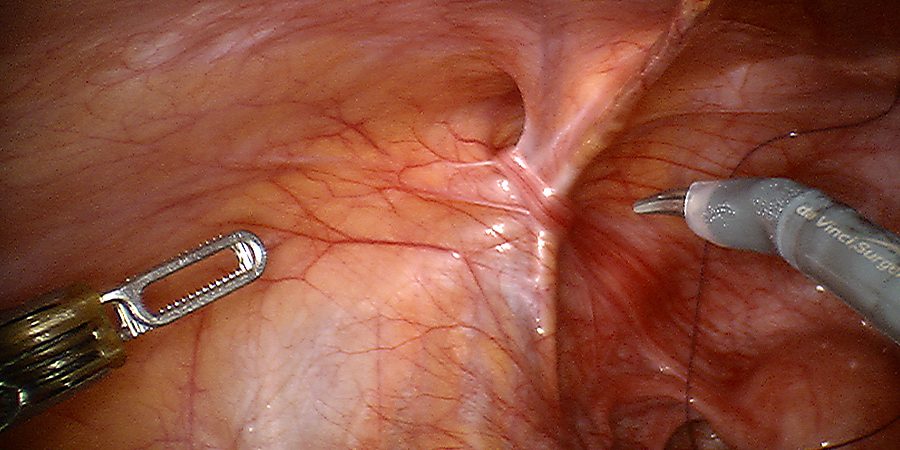Hernias in women by Dr Iraniha
When it comes to hernia discussion, most of our attention and conversations turn towards hernias in men. Of course hernias are more common in men than women but women may suffer hernia and its related complications as well. In fact, hernias in women are subject to be underdiagnosed, misdiagnosed or even ignored by clinicians. The incidence of groin hernias in women is 1.9%. In other words, from every 50 women one could have groin hernia with the female to male ratio of 1:6. Positive family history is an independent risk factor for developing hernias in women. However, there are other conditions that indirectly increase the risk of hernias in female such as obesity, heavy lifting, chronic cough, chronic constipation and multiple pregnancies.
Hernias are weaknesses or defects in the abdominal wall or pelvic floor. Therefore the intraabdominal or pelvic structures including fat, bowel, etc. could protrude through the defect and cause bulge, pain or both. At times, the intraabdominal structure that protrudes through the hernia defect, could get caught in there and create a life threatening condition called incarcerated or strangulated hernia. This condition is an emergency and requires immediate surgical intervention by a hernia repair expert.
There are many types of hernias in women.
These hernias are as follow:
1. Abdominal wall hernias
a. Inguinal hernia (located in the groin region)
I.Indirect inguinal hernia (the most common hernia in female, mostly congenital)
II.Direct inguinal hernia (mostly acquired)
III. Femoral hernia (just below the groin region, more common in female than men)
b. Ventral hernia (located in the abdominal wall)
I. Umbilical hernia (located in the belly bottom, very common after pregnancy)
II. Epigastric hernia (located in the mid-upper abdomen)
III. Spigelian hernia (located in the right or left lower abdominal wall)
IV. Incisional hernia (located under or at the vicinity of surgical incision, women who have undergone any type of abdominal surgery are prone to developing abdominal wall hernia called incisional hernia. This type of hernia is usually related to significant weakness or non-healing of the abdominal wall musculature after any type of incision necessary for abdominal surgery.)
2. Pelvic floor hernias (weaknesses in the pelvic floor that are more common in women due to broader pelvic cavity and stresses of pregnancy, labor and delivery)
a. Obturator hernia (rare, usually in older and very thin female)
b. Para vesical hernia (next to the bladder)
c. Perineal hernia ( mostly the result of multiple pregnancy, labor and delivery))
Is there any symptoms to detect hernias in women?
In most cases, the hernias have no signs or symptoms. These hernias are usually diagnosed at the time of a routine physical examination or during an operation for other surgical problems. Unfortunately, the painful but non-palpable hernias are extremely common among women due to their usually small hernia defects which creates an extremely difficult challenge in diagnosing the hernias in a timely manner. Hernia in women may present with pain that could vary from minor discomfort to agonizing pain. Patients usually describe the pain as discomfort, feeling pressure, pins and needles or burning sensation, or sharp and excruciating pain. Their pain increases with activity, exercise, lifting, straining, coughing, sneezing, and standing or sitting too long and in most cases it alleviates by lying down. Depending on the type of hernias, the location of the pain varies.
What kind of pain hernias in women are related to?
The pain is usually related to irritation and stimulation of the peripheral nerves due to mechanical distortion of the abdominal wall or pelvic floor secondary to the hernia defect. There are significant number of women who suffer chronic pelvic and lower abdominal pain due to variety of different etiologies such as endometriosis, ovarian or tubal pathologies, dysmenorrhea, dyspareunia, pelvic floor tension myalgia, irritable bowel syndrome, vulvar vestibulitis, painful bladder and iliopsoas and quadratus lumborum muscle spasm. Unfortunately, the etiology of their pain is not always clearly identified. Hernias are one of those etiologies known to be responsible for chronic pelvic and lower abdominal pain in women which could be underdiagnosed, misdiagnosed or even ignored by clinicians. Some of these patients with pain actually caused by hidden hernia are incorrectly diagnosed and erroneously treated for a long time as having ovarian cyst, endometriosis or fibroma. Therefore, the diagnosis of the hernia should be suspected with any pain in the lower abdomen or groin region, especially during heavy activity, exercise, lifting, coughing, sneezing or straining. On the physical examination, the patient might have a bulge or just a focal tenderness in the painful region. The diagnosis of hernias are usually based on history and physical examination but it could be confirmed by diagnostic imaging such as ultrasound, CT scan or MRI. The type of surgery for hernia are done by Laparoscopy surgery and or Robotic Surgery at our Orange County Surgical Center
The hernias in women should not be taken lightly or ignored. Once the hernias in women is diagnosed, the repair should be carried on as soon as possible, not only to decrease or relieve the pain and discomfort but also to prevent the complications related to the hernia such as incarceration.
If you are having abdominal pain, consult with DR iraniha Expert in Hernia Repair. Contact our Orange County Surgical Center office at (949) 646-8444 and make a consultation with Dr Iraniha. Thank you









1 Comment